Disclosure: This article contains affiliate links. We may earn a commission from purchases at no extra cost to you, which helps our travel content.
G'day, fellow adventurers! Hunter Bernard here, reporting from the breathtaking heights of the Andes. After 35 years behind the wheel of buses in Liverpool and Sydney, I've found myself on the passenger side for once, zigzagging through Peru's Sacred Valley. This isn't my first rodeo in Peru—I've been drawn back three times now—but the food, oh mate, the food keeps calling me back like a siren song. When you've spent decades watching the world through a windscreen, you develop a nose for authentic experiences, and Peru's cuisine is as genuine as they come. From hearty mountain stews that warm you after a day's hike to street food that costs pennies but delivers pounds of flavor, this journey from Cusco to Machu Picchu is as much about feeding your belly as it is about feeding your soul. Grab your forks (or sometimes just your fingers), and let's dive into a week of eating like proper Peruvians—no tourist menus, no fancy white tablecloths, just honest-to-goodness grub that'll fuel your Andean adventure.
Cusco: Beyond the Tourist Trail
After touching down in Cusco, most travelers make a beeline for the Plaza de Armas and end up paying through the nose for mediocre food with a 'view.' Not this old bus driver. My first stop is always San Pedro Market, where the real Cusqueños shop and eat.
The market is a riot of colors, smells, and local chatter—reminds me of Liverpool's Paddy's Market back in the day, only with more quinoa and fewer knock-off tracksuits. Head straight to the food stalls at the back where S/10 (about £2) gets you a menu del día that'll keep you fueled for hours of exploring. My go-to is the caldo de gallina—a hearty chicken soup that helps with altitude adjustment better than those oxygen canisters the tourist shops peddle.
For dinner, avoid anywhere with a chalkboard menu in English. Instead, wander down Calle Pampa del Castillo where local families run tiny restaurants from their front rooms. At Doña Julia's place (no website, no sign, just look for the blue door with a small wooden spoon hanging outside), I had the best rocoto relleno—stuffed spicy peppers—of my life for less than a tenner.
Before setting off on any Cusco adventure, I always pack my trusty water bottle with filter. Saved me countless times from dodgy tummy issues and plastic waste. When you're navigating narrow cobblestone streets at altitude, the last thing you need is dehydration slowing you down.

💡 Pro Tips
- Ask taxi drivers where they eat lunch—they know the best value spots
- Learn the phrase 'Muy picante?' (Very spicy?) unless you fancy a surprise
- Eat your main meal at lunchtime like locals do—it's cheaper and portions are bigger
Sacred Valley's Hidden Culinary Gems
The Sacred Valley isn't just a stepping stone to Machu Picchu—it's a food destination in its own right. After decades of navigating Sydney's chaotic bus routes, the collectivos (shared vans) of the Sacred Valley felt like a homecoming. They're cheap as chips and connect all the major towns, though the drivers make me look like a cautious grandma by comparison!
In Pisac, skip the tourist restaurants lining the market and head to the local chicharronería on the corner of the main square. For S/25, you'll get a plate of chicharrón de cerdo (fried pork) with giant corn kernels (choclo) and mint tea that'll have you questioning why you ever bothered with fancy restaurants.
Urubamba holds my favorite food secret in all of Peru. Behind the main square, down an unmarked alley, is a family-run clay oven bakery. They make empanadas with fillings that change daily based on what's fresh. I've literally planned entire day trips around being there at 11am when they come steaming out of the oven.
In Ollantaytambo, the pre-Incan terraces aren't the only impressive sight. The town's cuy (guinea pig) is legendary. Now, I know what you're thinking—I was skeptical too. But when in Rome... or Peru. At La Esquina, they serve it without the head (a blessing for squeamish travelers) and crispy as anything. Tastes a bit like gamey duck. Not for everyone, but certainly a story to tell back home.
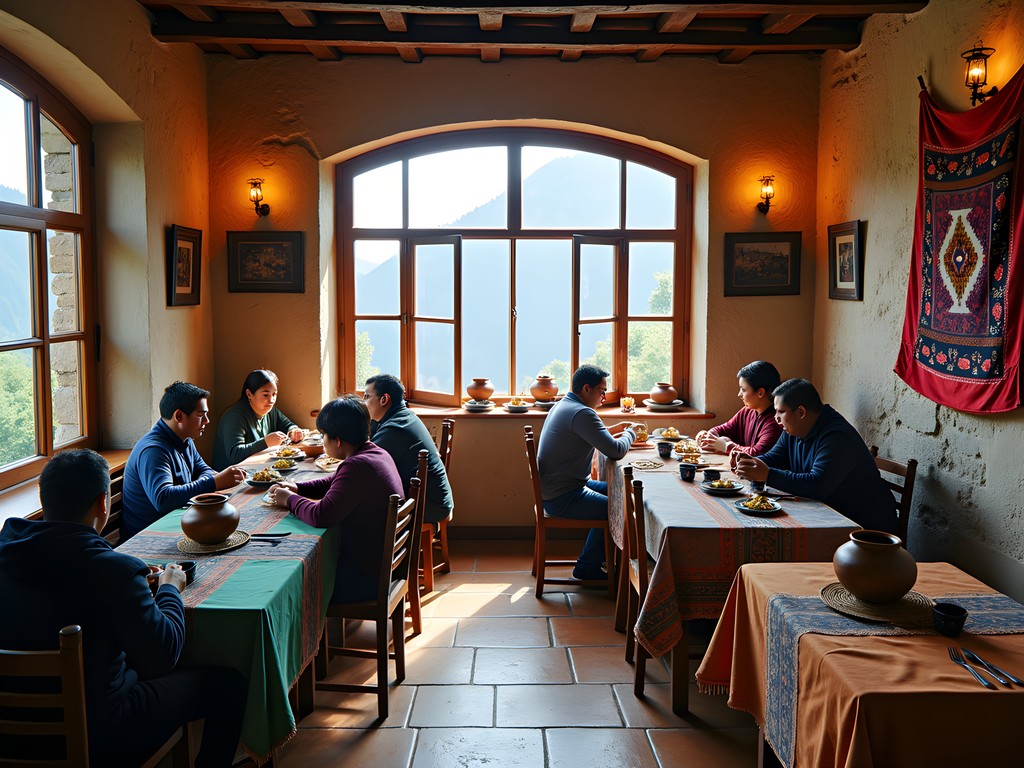
💡 Pro Tips
- Take collectivos between towns—they're 1/4 the price of taxis and run frequently
- Carry small bills—many small vendors can't break large notes
- Try chicha morada (purple corn drink)—it's sweet, refreshing, and uniquely Peruvian
Aguas Calientes: Dodging Tourist Traps
Aguas Calientes (or Machu Picchu Pueblo) is a necessary evil on your journey—a town that exists solely for tourism, with prices to match. After 35 years of navigating bus routes, I've developed a sixth sense for tourist traps, and this town is full of 'em.
My first piece of advice: avoid the restaurants on the main square like they're charging London prices—because they are. Instead, head to the local market on the upper side of town. Upstairs you'll find food stalls where workers eat. S/15 gets you a soup, main, and drink. Nothing fancy, but honest cooking that won't empty your wallet.
For dinner, walk ten minutes uphill from the train station to Chaska Restaurant. It's where the train staff and porters eat, which tells you everything. Their lomo saltado (stir-fried beef) could rival any I've had in Lima, and at half the price of the tourist joints.
One thing I never travel without in these remote mountain towns is my portable power bank. The electricity in Aguas Calientes can be spotty, and there's nothing worse than losing your camera charge before Machu Picchu. This one's powerful enough to charge my camera, phone, and even my mate's tablet when he forgot his adapter.
If you've got an early start for Machu Picchu (and you should—the first buses leave at an ungodly hour), several bakeries open around 4:30 am selling fresh bread and strong coffee. The one opposite the bus station does a bacon sandwich that reminds me of greasy spoon cafes back in Liverpool—not Peruvian, but sometimes comfort food is what you need before a big day.
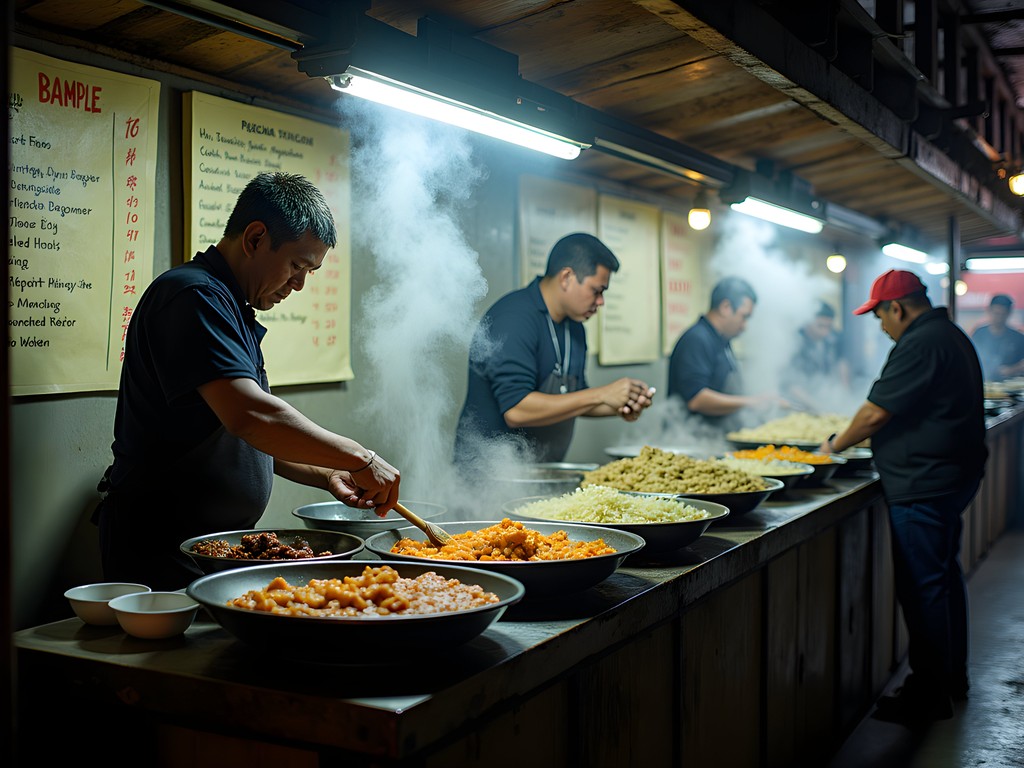
💡 Pro Tips
- Book your Machu Picchu bus tickets the night before to avoid morning queues
- Pack snacks for Machu Picchu—food inside is overpriced and limited
- Try a pisco sour, but limit yourself to one—altitude makes alcohol hit harder
Machu Picchu: Picnicking with the Incas
Let's get one thing straight—the food at Machu Picchu itself is daylight robbery. A sandwich and water can set you back S/50, and it's about as inspiring as the sandwiches we used to get at the Liverpool bus depot canteen.
The savvy move is to prepare your own picnic. I always bring a small packable daypack that folds into nothing in my main bag but expands to hold a decent lunch. The night before visiting Machu Picchu, I hit the small grocery shops in Aguas Calientes for fresh rolls, local cheese, avocados (they're enormous in Peru), and a bag of chifles (plantain chips).
There's something magical about munching your sandwich while perched on a quiet corner of the ancient city, watching the clouds drift between the peaks. Just remember to pack out all your rubbish—this isn't a Sydney park where the council comes through with bin bags.
After you've had your fill of Incan architecture, the walk back down to Aguas Calientes (instead of taking the bus) works up an appetite. At the bottom, reward yourself with picarones—Peruvian donuts made with sweet potato and squash, drizzled with syrup. There's usually a lady selling them from a cart near the bridge. Best S/5 you'll spend all day.
If you're catching the afternoon train back to Cusco, the vendors at Poroy station (where many trains terminate) sell hot cups of emoliente—a herbal tea with toasted barley, flaxseed, and medicinal herbs. It's the perfect nightcap after a long day of exploring, and at S/2, it won't break the bank.
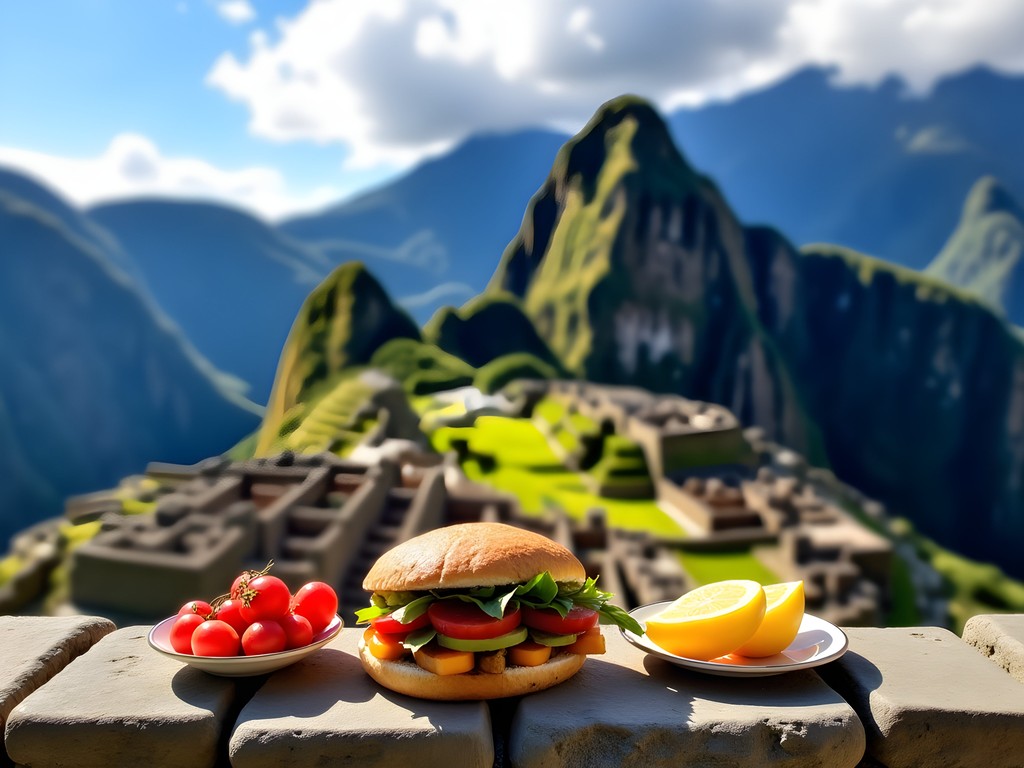
💡 Pro Tips
- Bring twice as much water as you think you'll need—Machu Picchu is hot and exposed
- Eat a protein-heavy breakfast before climbing Huayna Picchu—you'll need the energy
- There's a water bottle refill station near the exit—bring a filter bottle to use it safely
Street Food Adventures: For the Brave of Stomach
If there's one thing my decades of bus driving taught me, it's that the best meals often come from the most unexpected places. The same holds true in Peru, where some of the most memorable flavors come from street carts and hole-in-the-wall joints that would give health inspectors back home heart palpitations.
In Cusco, the area around San Pedro market transforms at night when vendors wheel out carts selling anticuchos (beef heart skewers). Now, I know what you're thinking—heart? Trust this old bus driver who's eaten his way across five continents: they're magnificent. Marinated in garlic and spices, then grilled over coals, they're tender and flavorful. At S/5 for two skewers, they're a bargain dinner.
Throughout the Sacred Valley, look for ladies selling tamales from baskets in the morning. Wrapped in banana leaves and steamed, these corn masa parcels stuffed with chicken or pork are breakfast of champions before a day of exploring. Just be sure to unwrap rather than eat the leaf—made that mistake once in Ollantaytambo to the great amusement of locals.
For the sweet-toothed traveler, the picarones vendors are your new best friends. These Peruvian donuts made from sweet potato and squash batter are crispy outside, fluffy inside, and drizzled with a syrup that's somewhere between honey and molasses. I've followed the same vendor around Cusco's Plaza San Francisco for three trips now—she recognizes me as 'the gringo who eats too many.'
A word of caution from someone who's learned the hard way: ease into street food gradually. Start with cooked items and fruits you can peel yourself. I always carry digestive aids in my day pack—they've saved more than one adventure from being derailed by an overenthusiastic stomach.

💡 Pro Tips
- Watch where locals queue—long lines usually mean good, safe food
- Eat at peak times when turnover is high and food is freshest
- Bring your own napkins or tissues—many street vendors don't provide them
Final Thoughts
As I sit in my Sydney flat, looking through photos of steaming soups and mountain-backdrop picnics, I'm reminded that Peru's food culture isn't just about taste—it's about connection. From the collectivo driver who insisted I try his wife's homemade ají sauce to the Aguas Calientes baker who remembered me three years later, food opened doors that would have remained closed to the typical tourist. My weathered bus driver's hands may look out of place holding delicate purple corn pudding, but they've helped me map a Peru that exists beyond the guidebooks—a Peru of everyday flavors and extraordinary hospitality. So when you make your journey from Cusco to Machu Picchu, remember: eat where the locals eat, point when your Spanish fails, and always, always say yes to seconds. Your wallet will thank you, your taste buds will sing, and your memories will be richer for having experienced Peru through its kitchens rather than just its ruins.
✨ Key Takeaways
- Avoid tourist restaurants and follow locals for authentic, budget-friendly meals
- Markets and food stalls offer the best value and most authentic flavors
- Prepare picnics for Machu Picchu to avoid overpriced site food
- Learn basic food Spanish or carry a food dictionary with pictures
- Street food can be safe and delicious if you follow local crowds and peak eating times
📋 Practical Information
Best Time to Visit
April-October (dry season)
Budget Estimate
$50-100 per day excluding Machu Picchu entrance
Recommended Duration
5-7 days
Difficulty Level
Moderate (Due To Altitude)
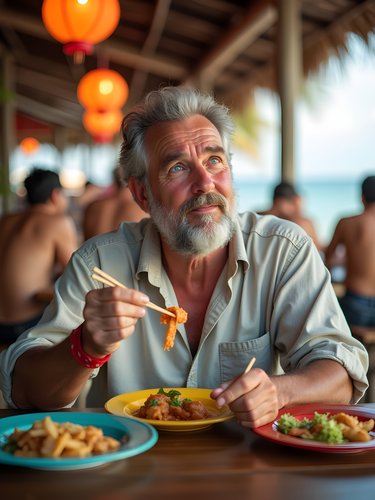
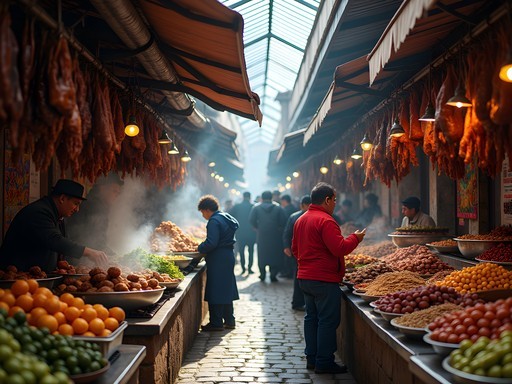

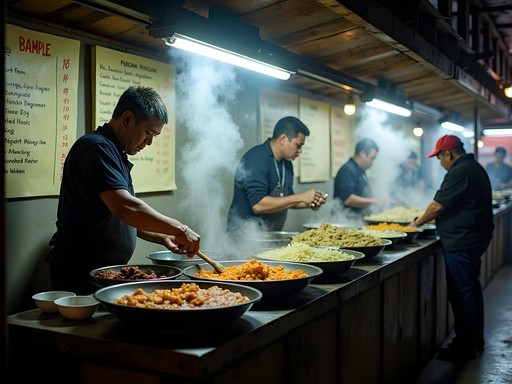
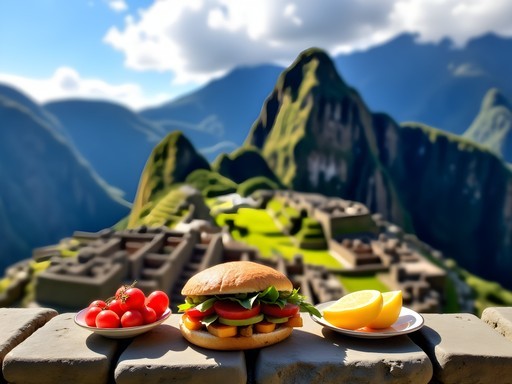








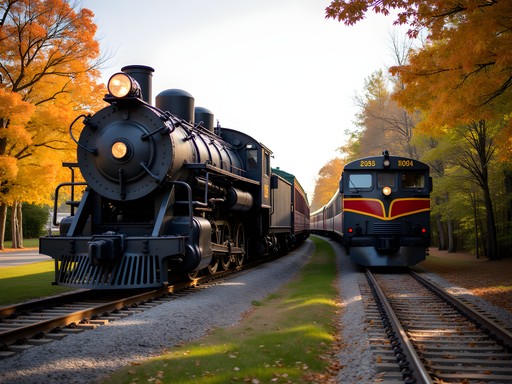


Comments
nomadclimber
Just wanted to add that the altitude can really affect your appetite in Cusco and Machu Picchu. I found coca tea helped settle my stomach during the first few days while I acclimated. The soups you mentioned were perfect - light enough when you're not feeling great but still flavorful. I packed some lightweight hiking snacks but ended up preferring to buy fruit and bread from local markets. Nothing beats eating fresh chirimoya while looking out at those Andean views!
waveninja
Any recommendations for vegetarians? Going in February and worried about finding options beyond rice and potatoes.
nomadclimber
Not the author, but I was there as a vegetarian last year. Try 'papas a la huancaína' (potatoes in spicy cheese sauce), 'rocoto relleno' (ask for the vegetarian version - some places stuff them with vegetables and cheese instead of meat), and 'choclo con queso' (giant corn with cheese). Cusco also has several vegetarian restaurants now - Green Point was my favorite!
waveninja
That's super helpful, thanks! Will definitely check out Green Point.
wanderexplorer
Is it safe to eat from street vendors? I'm worried about getting sick but those anticuchos look amazing!
Hunter Bernard
Good question! I follow a simple rule: go where there's a queue of locals. Fresh turnover means safer food. I ate street food daily and was fine, but always carried some stomach meds just in case. The anticuchos are worth the risk - just make sure they're piping hot when served!
Casey Andersson
Hunter, your bus driver perspective is so refreshing compared to the usual luxury travel takes! While I typically stay at higher-end accommodations, I always make it a point to eat where locals eat. In Cusco, I actually took a cooking class at a local's home through cooking experience which was the highlight of my trip. We made aji de gallina from scratch and shopped at that same market you mentioned. For Sacred Valley food, I found that the further from tour bus stops, the better the food. The pre-Incan salt pans near Maras had an incredible small restaurant serving trout that was caught that morning. Your tip about making friends with hotel staff is spot on - our concierge sent us to his cousin's cevichería in a residential neighborhood that wasn't in any guidebook.
blueace
We just got back from Peru last month and totally agree about Aguas Calientes being a tourist trap food-wise. We found this tiny place three streets back from the main drag that served the best causa I've ever tasted. Wish we'd had your blog before going! The picnic idea at Machu Picchu is brilliant - we paid way too much for mediocre sandwiches at the hotel restaurant there.
nomadclimber
Do you remember the name of that place in Aguas Calientes? I'm going in December and would love to check it out!
blueace
It was called 'Manka' something... small blue door, family-run. About 3-4 blocks uphill from the train station. Sorry I don't remember exactly!
Sage Dixon
Hunter, your post brought back so many memories! Last year I spent two weeks exploring Peru's culinary landscape. That market in Cusco you mentioned - Mercado San Pedro - was a revelation. I still dream about those juice stalls where the ladies compete for your business! My best meal was actually in a tiny place in Ollantaytambo where an elderly woman served me rocoto relleno that made me sweat and smile simultaneously. Did you try the tree tomato juice? That tangy sweetness was my daily breakfast companion. For anyone heading there, don't miss eating at a 'picanterías' - those lunch-only spots where locals gather. The set lunch menus are incredible value and authentically Peruvian.
sunsetone
Which local restaurant in Cusco would you most recommend for a family with kids who aren't super adventurous eaters?
Hunter Bernard
Great question! Pachapapa in San Blas neighborhood has excellent traditional dishes but also some milder options. Their alpaca is tender and not too gamey, and the lomo saltado is always a hit with kids.
sunsetone
Thanks so much! Adding it to our list for our trip in January.
adventurewanderer
This post has me drooling! I'm heading to Peru next month and can't wait to try cuy and that purple corn drink you mentioned!
Hunter Bernard
Cheers mate! The chicha morada (purple corn drink) is refreshing after a long hike. Let me know how you go with the cuy - it's definitely an experience!
Fatima Sims
Hunter, your post brought back so many memories! That section about picnicking at Machu Picchu was brilliant - I wish I'd thought of that instead of paying for the overpriced restaurant. When I visited the Sacred Valley last summer, I found this incredible family-run chicha place in Chinchero where the grandmother had been brewing the corn beer for 40+ years. They served it with these spicy pork chicharrones that were mind-blowing. One tip for anyone heading to Cusco: don't miss the chocolate museo where you can make your own chocolate with Peruvian cacao. I brought my travel journal and wrote down all the recipes they taught us. Still making that hot chocolate with chili at home! Did you try cuy (guinea pig)? I couldn't bring myself to order a whole one but tried a small piece at a local's home. Definitely an experience!
islandking
That chicha place sounds amazing! And yes to the chocolate museo - their hot chocolate is incredible. I passed on the cuy too... just couldn't do it when they serve the whole animal!
smarttime
Great post! I'm heading to Machu Picchu next month. How difficult was it to find vegetarian options in the smaller towns? Any specific places you'd recommend?
Fatima Sims
Not Hunter, but I can tell you vegetarian options are getting much better in Peru! In Aguas Calientes, try Indio Feliz - they have amazing veggie quinoa dishes. In Ollantaytambo, there's a small place called Hearts Cafe with great vegetarian soups and sandwiches. Just learn to say 'Soy vegetariano/a' and you'll be fine!
smarttime
Thanks so much for the tips, Fatima! Will definitely check out Hearts Cafe. Did you find you needed to book ahead for these places or could you just walk in?
Fatima Sims
For Hearts Cafe you can just walk in, but Indio Feliz gets busy around dinner time so I'd recommend a reservation if you're going after 6pm. Enjoy your trip!
Venture X
Premium card with 2X miles, $300 travel credit, Priority Pass